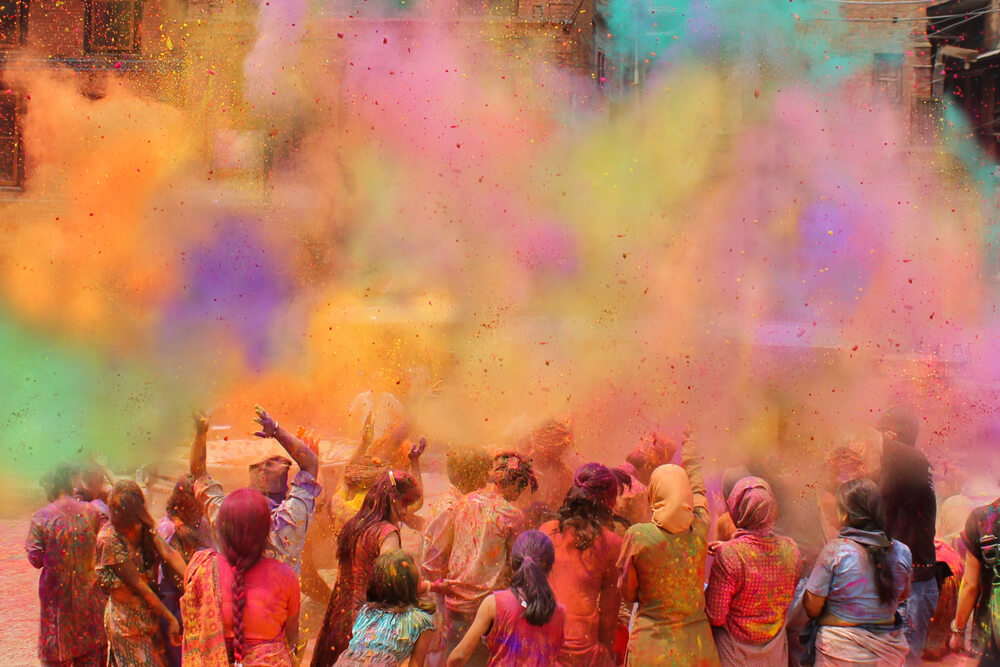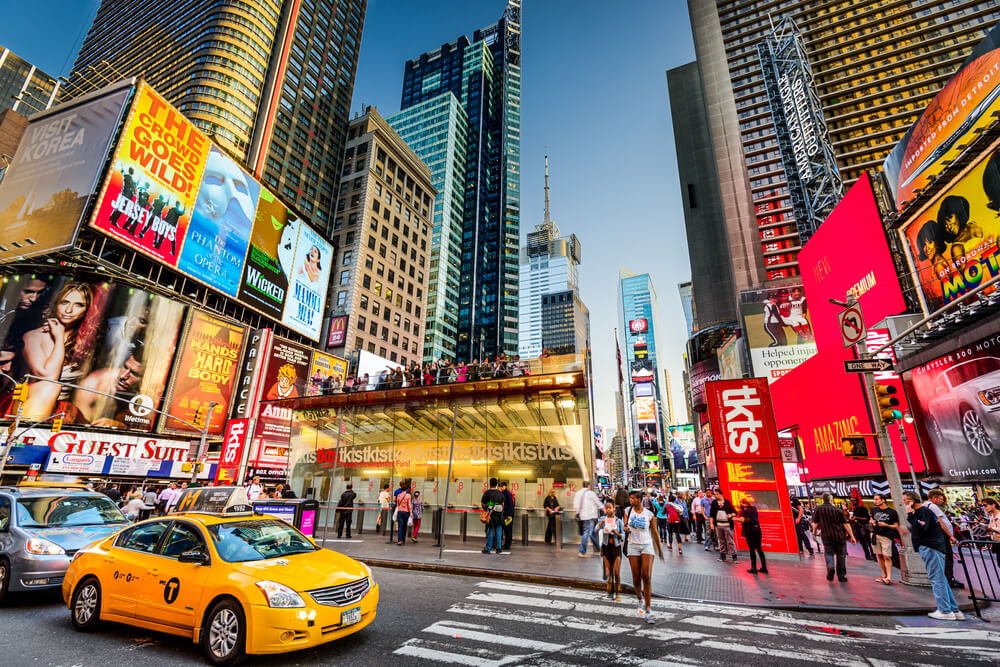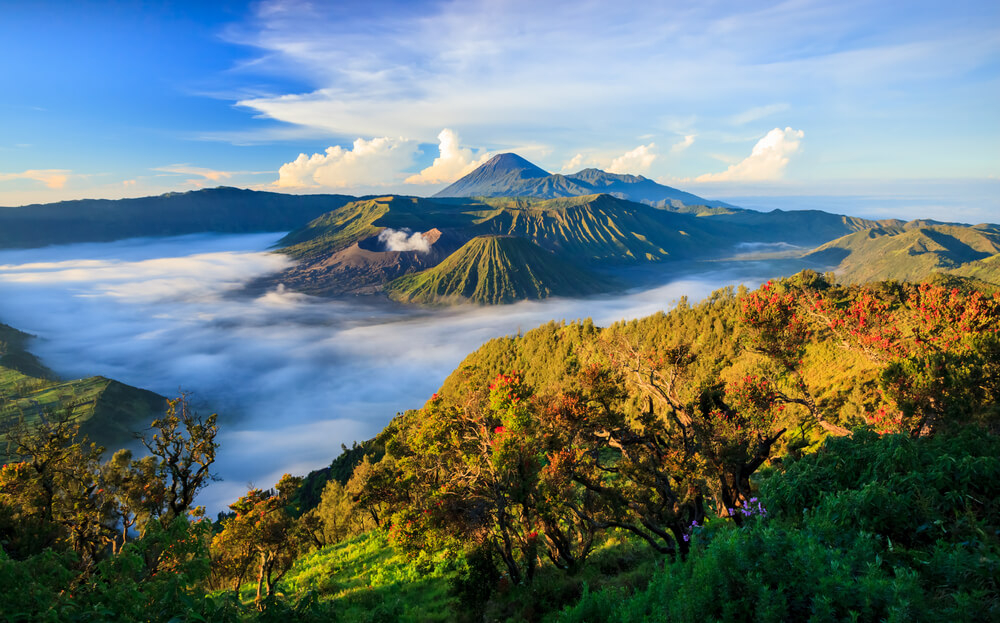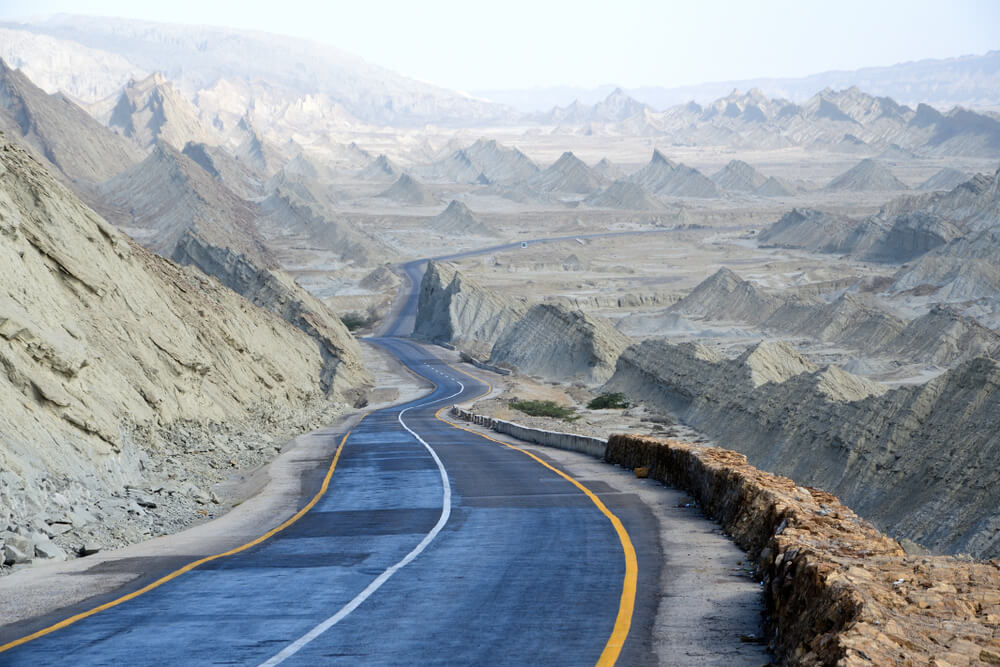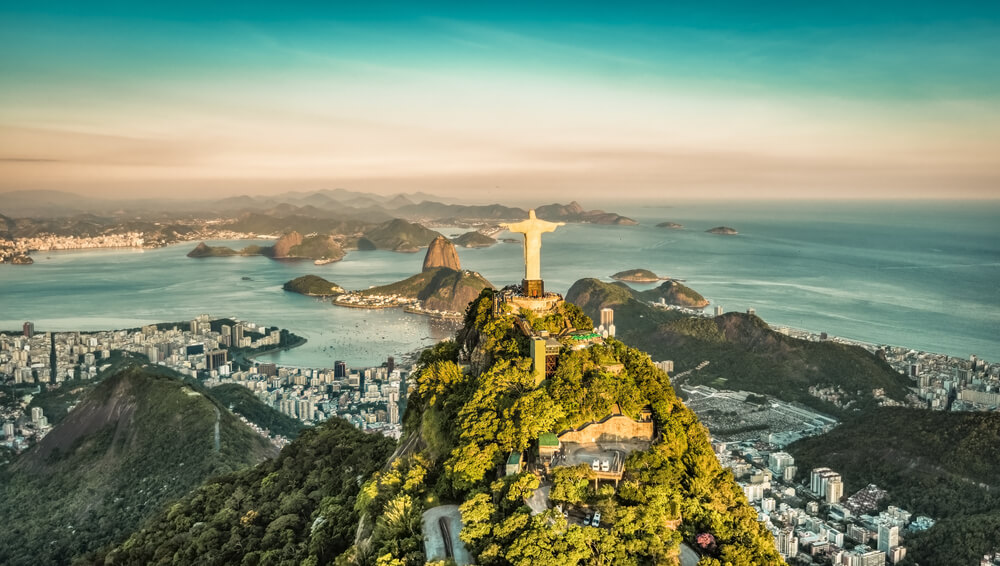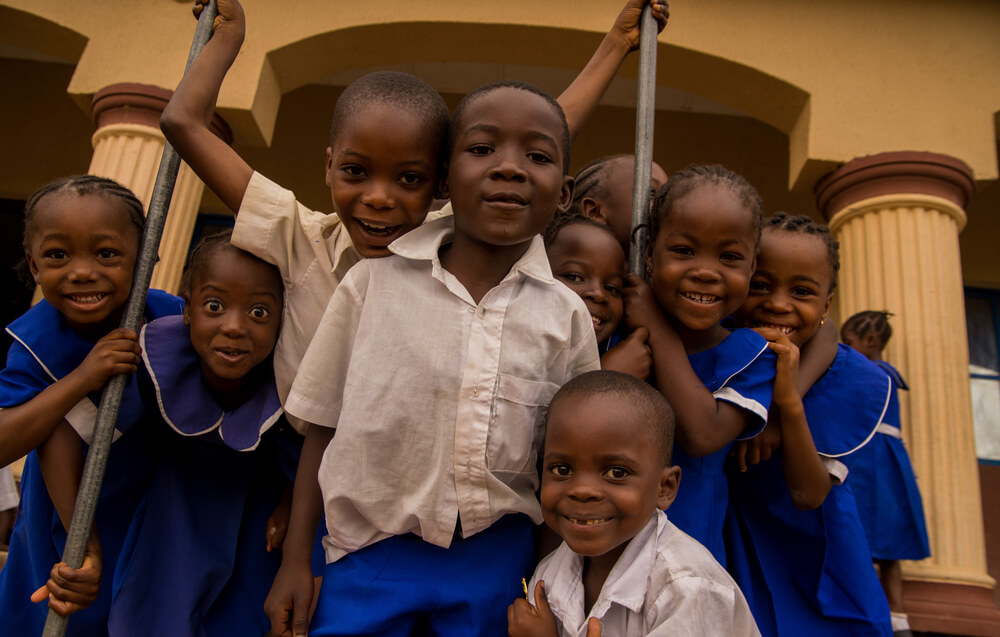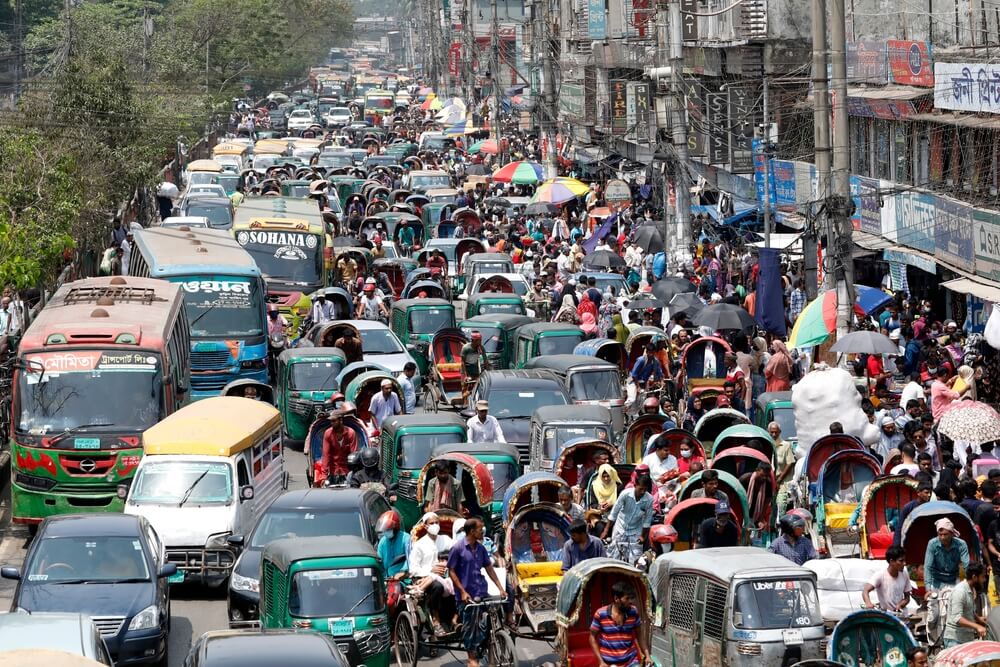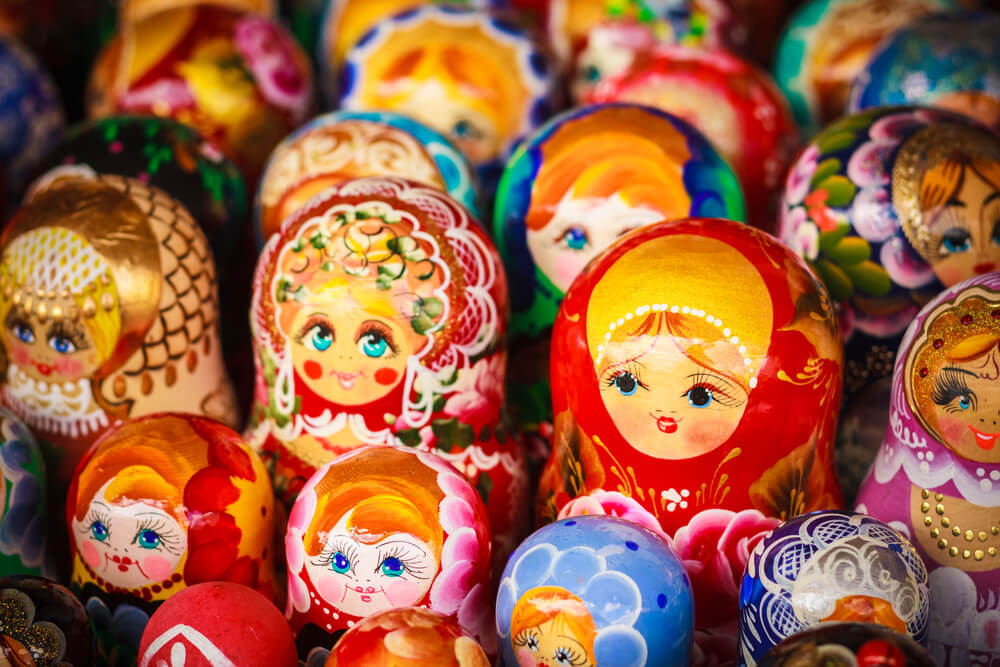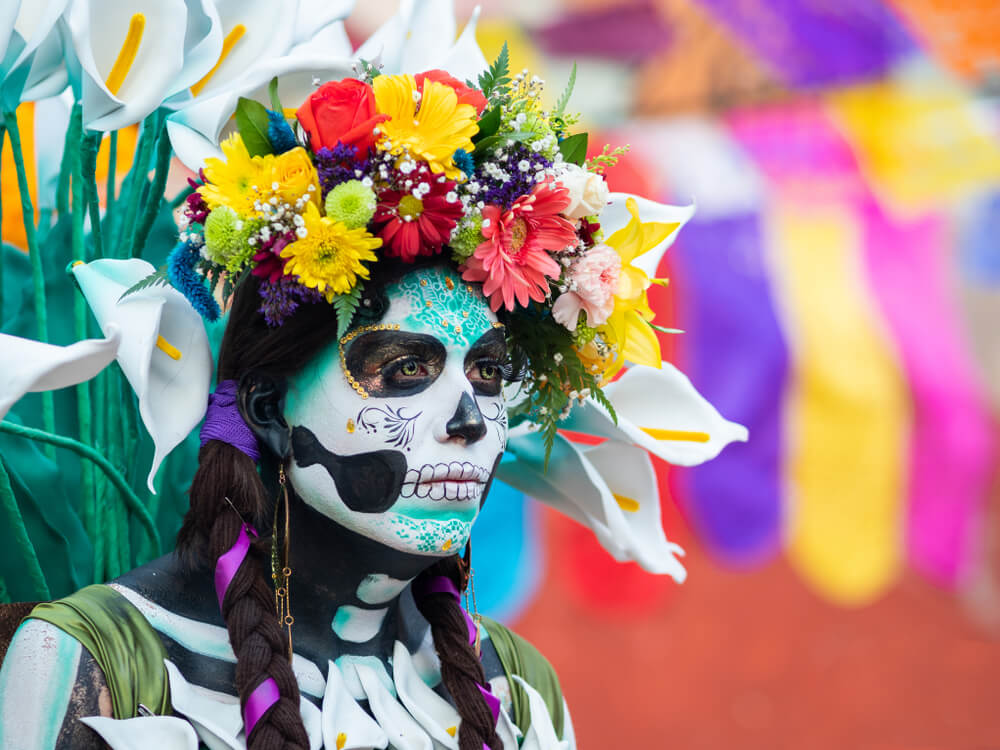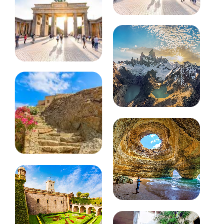What are the 10 most populous countries in the world?

Whether out of simple curiosity, to answer a Trivial Pursuit question or to reflect on the future of our planet, we have all wondered at least once which is the most populous city or country in the world? We think of China and India, and we suspect that South America and Africa also have large populations, but what is the reality?
One thing’s for sure, size really doesn’t matter here, and giants like Australia and Canada have populations 2 to 3 times smaller than small countries like France!
You may have seen that the Japanese government is offering up to a million yen per child for families who agree to leave the city!
And we’ve all seen those abandoned villages in the middle of nowhere that offer a financial grant and a house to anyone willing to come and repopulate them.
75% of the world’s population lives in urban areas. How did we all end up in the same place? And why have we done so?
We’re not going to get into a sociological thesis or a demographic debate here, but simply look at how the world’s 8 billion people are distributed by giving you a ranking of the world’s 10 most populous countries! (main source: cia.gov world population prospects)
Spoiler alert, more than half the world’s population lives in Asia!
A few figures to get you started:
|
CONTINENT |
POPULATION |
AREA |
DENSITY |
|
Asia |
4,506,120,398 inhabitants |
31,573,998 sq km |
142.72 inh./km² |
|
Africa |
1 319 218 883 inhabitants |
30 429 132 km² of land |
43.35 inhabitants per km² |
|
Americas |
1 031 696 226 inhabitants |
42 305 645 sq km |
24.39 inhabitants per km² |
|
Europe |
747,963,759 inhabitants |
23,157,861 square kilometres |
32.30 inhabitants per km² |
|
Oceania |
44,497,317 inhabitants |
8 508 503 km² of land |
5.23 inh./km² |
|
Antarctica |
1,731 inhabitants |
14 551 499 square kilometres |
0.00 inhab./km² |
Source: population data net/world
What are the 10 most populous countries in the world?
1. China
You were right, it’s China that comes in at number 1 in this ranking of the world’s most populous countries!
In the 1960s, the fertility rate reached a record 7.4 children per woman, so obviously it’s going up fast!
Despite its one-child policy implemented between 1970 and 2015, and its attempts at birth control, China is experiencing intense demographic inertia, reaching a population of 1.45 billion in 2022, i.e. one-fifthof humanity!
You can imagine that such a large number of people, scattered over a territory as large as China, are bound to be very different from one another! China recognises 55 nationalities in addition to the Hans (92% of the population), speaking around forty dialects and belonging to several major religious movements: traditional Chinese religion, including Taoism (the majority), Buddhism, Protestantism, Islam and Catholicism, as well as Hinduism, but very few.
- Life expectancy at birth: 74 years for men and 78 years for women
- Average age: 38
- Most populous city : With over 32 million inhabitants, Chongqing is the most populous city in China, but Tokyo, with over 37 million inhabitants, is the largest city in the world !
2. India
As you might have guessed, behind China is India! And it’s right on its heels, with a population of 1.41 billion in 2022. Experts believe that India will double China’s population by 2023 and reach 1.7 billion by 2050 (source: UN)!
All this beautiful world is divided into more than 2,000 ethnic groups, speaking several hundred different languages and believing in various religions. The majority (80%) of Indians practise Hinduism, but they also have the third-largest Muslim community in the world, and all the other major religious trends are represented! Just imagine the wealth of Indian culture! Only Africa can rival India in terms of linguistic, cultural and genetic diversity.
Independent from the British colonial empire in 1947, India was the first to introduce a policy of birth control. But because they did it, let’s say, democratically, on the responsibility of each individual, and without forcing anyone (unlike China), well, it didn’t work at all! The Indian population is growing by around 19 million people a year. That’s the entire population of Chile or Romania, to give you an idea.
- Life expectancy at birth: 68 years for men and 70.5 years for women.
- Average age: 28! In 2005, 45% of the population was under 20!
- Most populous city: Bombay (or Mumbai): over 20 million inhabitants!
3. United States
It is estimated that before Christopher Columbus arrived, there were around 1.5 million Amerindians living in what is now the United States.
You know the rest of the story: they were quickly replaced by the Spanish, who colonised a large part of the territory, followed by the English, the Russians and the French, who formed colonies left and right and set down their suitcases (and their slaves). This was followed by a large wave of new arrivals from all over Europe (Ireland, Italy, Spain, Denmark, etc.).
So you had massive voluntary immigration accompanied by large-scale forced immigration, born of slavery, which intensified as the years went by and the famous “American Dream” came into being.
The United States of America became a promised land, a country where anything was possible, a refuge. In short, everyone wanted a piece of the pie and by 1685, the population had increased by 120% in one generation!
Today, the US is a truly multicultural melting pot, even if immigration is much less easy today than it was in the 17th century.
In 2021, there will be around 332 million inhabitants: 60% white, 18.4% Hispanic and Latino, 12.4% black, 5.6% Asian, 2.5% mixed race and 0.7% Native American.
- Life expectancy at birth: 79 years for men and 81 years for women.
- Average age: 38
- Most populous city: New York, with around 9 million inhabitants
4. Indonesia
We don’t often think of Indonesia when we think of the world’s most populous countries. Maybe that’s because in France we think of the charming little island of Bali and easily forget that Indonesia is made up of 13,466 islands, 922 of which are inhabited! It’s only the largest archipelago on the planet, so it’s only natural that there are a few people and quite a few languages (over 700 in addition to the official Bahasa Indonesia).
As for religion, this is the largest Muslim country in the world! 87.2% of Indonesians are Muslims. The rest of the population is divided between Buddhists, Catholics, Protestants and Hindus.
It is the fourth most populous country in the world, with approximately 277 million inhabitants, but in fact more than half the population lives on the island of Java, which has a population of around 152 million! So to give you an idea, that’s almost twice as many people as in France in an area about 5 times smaller! So there you have it.
Then you have around 20% of the population on the great island of Sumatra, and the remaining 25% are spread more or less equally over the other islands.
That gives you an idea of what to expect if you go on a trip to Indonesia! Big Asian cities teeming with life and culture, and areas of unspoilt nature that are totally heavenly!
- Life expectancy at birth: 71 years for men and 75 years for women
- Average age: 30.5 years
- Most populous city: Jakarta, with around 11 million inhabitants
5. Pakistan
In the middle of this ranking comes Pakistan with around 243 million inhabitants.
You may not have known it, but the Islamic Republic of Pakistan was founded in 1947, following what is known as the “Partition of India“. This was the separation of the British colonial Empire of India into 3 parts, following a geographical and religious logic. To put it simply, in the centre you have India as we know it today, with a Hindu majority, flanked by two independent states with a Muslim majority. One to the west, Pakistan, and one to the east, Bangladesh.
On paper, it looks simple, but this partition of India led to one of the largest population movements in history, with more than 12 million people joining one or other of the new countries (causing hundreds of thousands of deaths in the process!). Not to mention the division of the army, the Royal Navy, the treasury, the railways and other administrative headaches!
In any case, you’ll notice that even cut in three, each piece is in the top 10 most populous countries in the world!
- Life expectancy at birth: 67 years for men and 72 years for women
- Average age: 22
- Most populous city: Karachi, with around 15 million inhabitants
6. Brazil
Change continents and head for the largest country in South America!
Considered a continental country, it is the fifth largest in the world and shares its borders with almost all the countries of South America except Chile and Ecuador!
The reason it’s so big compared to the other countries around it has to do with the Treaty of Tordesillas which, in 1494, quietly divided the world in two between the Spanish and the Portuguese (without taking into account the inhabitants concerned, or their borders), as part of the great colonial discoveries! It was the passage of this imaginary line through South America that would roughly make up what is now Brazil (to oversimplify).
Before 1500, it is estimated that there were around 2 million people living on these lands. Today, Brazil’s population is a great melting-pot with immense ethnic and cultural diversity, born, as in the United States, of two immigrations, one voluntary and one forced, giving Brazil many influences (religious, culinary, musical, etc.) from Africa. The incredible and necessary Amerindian culture, on the other hand, is largely in the minority.
The 217 million Brazilians are divided into 5 ethnic groups: 47.7% white, 43.1% mestizo, 7.6% black, 1.1% Asian and 0.4% indigenous.
- Life expectancy at birth: 70 years for men and 78 years for women.
- Average age: 32
- Most populous city: São Paulo, with around 12.3 million inhabitants.
7. Nigeria
Make way for Africa with the seventh most populous country in the world: Nigeria!
With a population of 225 million, it is also the most populous country in Africa, with over 250 ethnic groups! To find your bearings on a map, Nigeria is situated on the Gulf of Guinea and is bordered to the west by Benin, to the east by Cameroon, to the north by Niger and to the north-east by Chad. Here you’ll find large, unspoilt nature reserves and huge national parks. Imagine tropical rainforest, waterfalls, savannah and the Niger Delta, one of the largest deltas on the planet!
The birth rate is very high (around 5 children per woman), suggesting explosive population growth! According to a United Nations study, Nigeria’s population is expected to reach 440 million by 2050 and 914 million by 2100!
52% of Nigerians live in urban areas, and the country has around twenty cities with more than a million inhabitants! By way of comparison, in France we only have one, and that’s the capital!
As for religion, you have Christianity (in the south) and Islam (in the north) in roughly equal proportions, plus a host of traditional African minority religions, such as Animism, Voodoo and the Yoruba religion, practised by around 2.7% of the population. Unfortunately, Nigeria suffers from severe religious persecution and a number of very violent attacks that have shaken the country and the international press.
- Life expectancy at birth: 57 years for men and 61 years for women
- Average age: 18.5 years
- Most populous city: Lagos, with around 15.4 million inhabitants
8. Bangladesh
Back to Asia, with the eighth most populous country in the world: Bangladesh.
Almost entirely landlocked within India, on the shores of the Bay of Bengal, the country also shares a border with Burma.
As we have seen, Bangladesh was born in 1947, from the separation of India. As a result of this ethnic and religious division, the Bangladeshi people are 98% Bengali and 91% Muslim (the others practise Hinduism).
With over 165 million inhabitants living in just 147,570 km², Bangladesh is also one of the most densely populated countries in the world!
According to the 2022 census, 68% of Bangladeshis live in the countryside.
The countryside in Bangladesh is fertile and green, fed by numerous rivers. And because the country lies on either side of the Tropic of Cancer, Bangladesh has a typical tropical climate, with mild winters, hot, humid summers and major monsoons from June to October. Unfortunately, the country is hit almost every year by major natural disasters such as floods and cyclones. Global warming could lead to the loss of more than 20% of the country’s territory to rising sea levels and the displacement of more than 50 million climate refugees by 2050 .
- Life expectancy at birth: 71 years for men and 76 years for women
- Average age: 27
- Most populous city: Dhaka, with over 13 million inhabitants
9. Russia
The world’s largest country comes ninth in this ranking, with almost 146 million inhabitants!
The Russian giant, with an area of over 17,000 km², stretches from Alaska to Eastern Europe. 80% of its territory is in Asia, 20% in Europe.
This exceptional size gives the country immense geographical diversity, ranging from the tundra of the Arctic Circle to the Eurasian steppes and the humid subtropical climate of the shores of the Black Sea. That said, the majority of the country has a continental climate, covered by the Taiga, the boreal forest.
As you can imagine, such a wide range of climates and distances mean that there are real differences in population and low population density (8 inhabitants per km²). The Russian Federation is therefore a multi-ethnic state with more than 170 different ethnic groups. What’s more, Russia is the world’s second-largest immigrant-receiving country, after the United States! As far as religion is concerned, the vast majority of Russians are Orthodox. The country’s second largest religion is Islam, with around 7% of the population, followed by other pagan religions and practices which are in the minority.
- Life expectancy at birth: 67 years for men and 78 years for women
- Average age: 40
- Most populous city: Moscow, with almost 13 million inhabitants
10. Mexico
The last country to enter the top 10 most populous in the world is none other than Mexico.
Make no mistake about it, this country is located in North America (although it does count as a Latin American country), between the United States and Central America. With 129 million inhabitants, 99% of whom speak Spanish, it is the most populous Spanish-speaking country in the world.
Before the arrival of the Spanish, Mexico was home to flourishing civilisations such as the Toltecs, Mayans and Aztecs. Today, Mexico is home to around 12 million indigenous people.
It is one of 17 countries known as the “Megadiverse”, in which the majority of the Earth’s plant and animal species are represented. With 33 UNESCO sites, Mexico has overtaken the United States in 2021 to become the leading tourist destination in the Americas.
Emigration is a factor to be taken into account when talking about demographics in Mexico. Some 450,000 people emigrate every year, mainly to the United States. It is commonly said that Los Angeles is the second largest Mexican city, with more Mexicans than Guadalajara and its 4 million inhabitants!
Their massive presence in the USA is also explained by the fact that the territory occupied by California was previously occupied by Spanish colonists before becoming a province of Mexico during the Mexican War of Independence. Mexico subsequently ceded California to the United States on 2 February 1848.
- Life expectancy at birth: 69 years for men and 76 years for women
- Average age: 29
- Most populous city: Mexico City, with over 22 million inhabitants
200 audioguided tours for cities all around the world
Download
